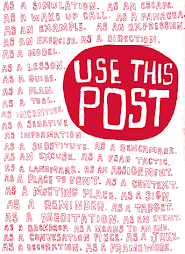 Henry Jenkins (@henryjenkins)
Henry Jenkins (@henryjenkins)8/17/12 11:06 AM
#hrheingold talks about network intelligence, participatory culture, and online community (final part)shar.es/7atkF
There’s one formula for collective intelligence: introduce a large number of people making refined decisions to a platform that makes it easy for them to share those decisions, add intrinsic value to the curation platform that serves the curators’ self-interest, mix in ways for individual curators to group and communicate. If it sounds easy, the hidden difficulty lies in recruiting a sufficiently large population of participants.
hmm.. already have a large group in public ed. many not satisfied.. perhaps we start there..[there is already lots of funding tied to it as well.. 1.3 trillion for starters]
perhaps with something like this.. a platform.. but one that caters to you.. it's in your head.. connecting you to others.. as we emerge as community
Humans keep changing the way we communicate — writing, the alphabet, print, telephone, broadcast media. And with new media practices come new social practices or new twists on older social practices. We attach familiar names to the new — horseless carriages and wireless telegraphs came to be known as automobiles and radios, and now we have Internet radio, shortwave radio, FM radio, satellite radio. Affinity spaces and hacker spaces, co-working spaces are emerging in the physical and the online world. So I do agree with Gee that it doesn’t make sense to call every affinity group a community, as well as agreeing with Wellman that people can receive the general benefits most people attribute to communities from online communications.




































